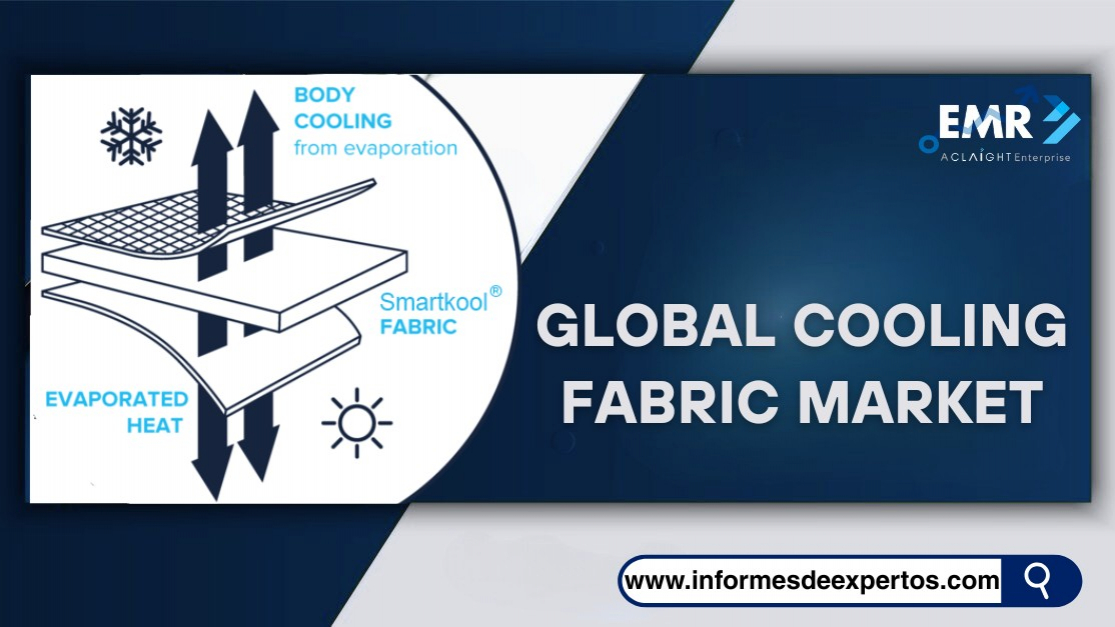The demand for innovative textiles that enhance comfort, performance, and sustainability has propelled the cooling fabric market into the spotlight. As global temperatures rise and consumers become more aware of health, comfort, and environmental impact, industries are rapidly adopting smart textiles to meet the changing needs. Among these innovations, cooling fabrics stand out as a game-changer across sportswear, medical, military, and industrial applications.
According to market research, the cooling fabric market was valued at USD 2.60 billion in 2024 and is projected to reach USD 5.20 billion by 2034, growing at a compound annual growth rate (CAGR) of 8%. This article delves into the key drivers, trends, challenges, and opportunities shaping the Global Cooling Fabric Market, and what it means for stakeholders across various industries.
What Are Cooling Fabrics?
Cooling fabrics are specially engineered textiles designed to regulate body temperature by promoting evaporative cooling, moisture wicking, and thermal conductivity. They are often used in garments and gear for athletes, workers in high-heat environments, and even in everyday wear. These fabrics work through passive or active mechanisms—passive systems wick moisture away and promote airflow, while active systems may involve phase-change materials or thermoelectric technologies.
Key Market Drivers
1. Rising Demand for Sports and Activewear
With the global fitness and wellness trend continuing to surge, there is an increasing demand for high-performance sports apparel. Athletes and fitness enthusiasts prioritize apparel that keeps them cool and dry during intensive activity. Brands are now integrating cooling fabrics into leggings, shirts, headgear, and innerwear to meet this rising need.
2. Growing Awareness of Heat Stress
Occupational safety standards have become more stringent, especially in industries like construction, mining, and manufacturing. Workers are at risk of heatstroke and exhaustion due to prolonged exposure to high temperatures. Cooling fabrics are being introduced into uniforms and protective wear to ensure worker safety and comfort.
3. Technological Advancements in Textile Engineering
Rapid advances in textile technology are making cooling fabrics more efficient, affordable, and adaptable. Nanotechnology, microencapsulation, and smart fiber engineering allow manufacturers to embed cooling capabilities directly into the fabric, eliminating the need for external cooling accessories.
4. Increased Military Spending
Defense agencies around the world are investing in performance-enhancing uniforms and gear. Soldiers often operate in extreme environments, and cooling fabrics are essential in reducing the risk of heat stress during combat or training. This is becoming a major growth avenue for the Global Cooling Fabric Market.
Key Market Segments
The cooling fabric market is segmented based on product type, technology, textile type, application, and region.
1. By Product Type
- Synthetic Cooling Fabrics: Made from materials like polyester and nylon; widely used due to affordability and performance.
- Natural Cooling Fabrics: Includes cotton and bamboo-based textiles; preferred for sustainability and breathability.
2. By Technology
- Active Cooling Fabrics: Utilize embedded systems or phase change materials.
- Passive Cooling Fabrics: Rely on moisture wicking and enhanced airflow.
3. By Application
- Sports Apparel
- Protective Wear
- Medical Textiles
- Lifestyle and Home Textiles
Regional Insights
1. North America
The U.S. leads in technological innovation and early adoption of performance textiles. Sportswear brands, such as Nike and Under Armour, are consistently innovating with new cooling apparel to meet consumer demands.
2. Europe
Sustainability and worker safety regulations in the EU are driving demand for natural and eco-friendly cooling textiles. Germany, France, and the UK are key markets.
3. Asia-Pacific
The region is projected to witness the fastest growth due to the presence of textile manufacturing hubs in China, India, and Bangladesh. Rising disposable incomes and urbanization are also boosting consumer demand for smart apparel.
4. Middle East and Africa
Due to extremely high temperatures in this region, there is a growing interest in cooling textiles, especially for industrial and military use.
Opportunities in the Global Cooling Fabric Market
1. Sustainable Innovations
With environmental concerns at the forefront, there is a shift toward bio-based cooling fabrics. Manufacturers who invest in sustainable production methods and materials will likely gain a competitive edge.
2. Smart Textiles Integration
The future of cooling fabrics lies in their integration with wearable technology. Clothing that monitors temperature, adjusts in real time, or connects to mobile apps offers high potential in the medical and fitness industries.
3. Healthcare Applications
There’s a rising demand for temperature-regulating fabrics in hospital gowns, bed sheets, and patient wear. This niche segment is expected to experience significant growth, especially in elderly care and chronic illness management.
Challenges to Market Growth
Despite the promising outlook, the Global Cooling Fabric Market faces several challenges:
High Production Costs: Advanced cooling technologies are expensive to develop and scale, leading to premium-priced end products.
Limited Consumer Awareness: Outside of sports and industrial sectors, many consumers are still unfamiliar with the benefits of cooling fabrics.
Durability Concerns: Some active cooling mechanisms lose effectiveness after multiple washes or prolonged use, which can deter repeat purchases.
VISIT ALSO:
Competitive Landscape
Major players in the cooling fabric industry are investing heavily in research and development to stay ahead. Key companies include:
- Coolcore LLC
- Nan Ya Plastics Corporation
- Ahlstrom-Munksjö
- Tex-Ray Industrial C
- Polartec Adidas AG
- Nike Inc.
These companies are collaborating with technology firms and academic institutions to enhance their product offerings and reach new consumer segments.









